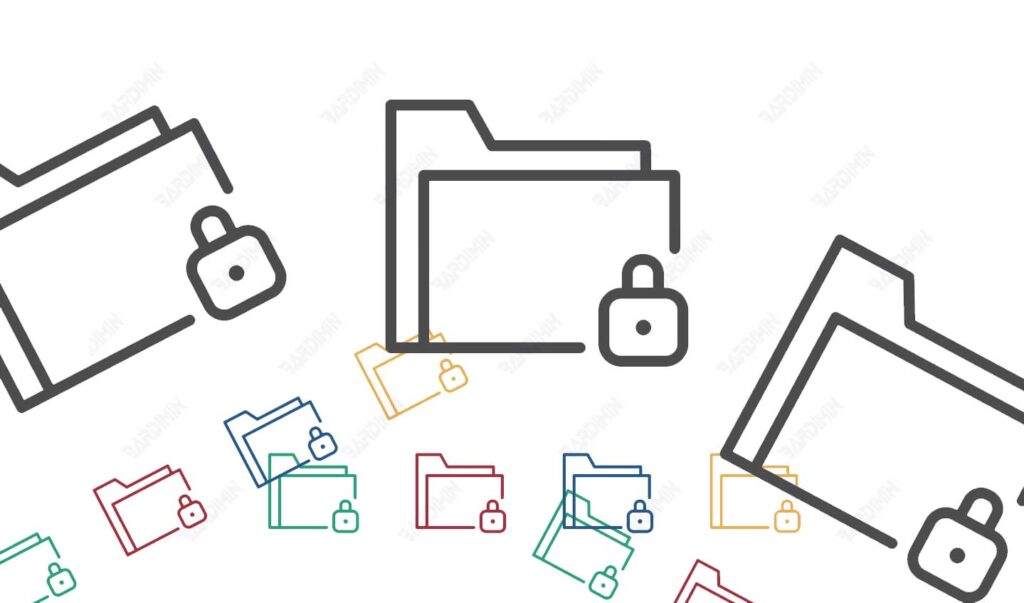Password-protecting a file or folder is an effective way to restrict access to data. Windows 11 has a built-in feature to do just that.
We live in a society where information and data are the most valuable assets. You may have some folders on your computer that contain sensitive information, such as your home address, bank account information, company statements, confidential files, or anything else. And if you share your computer with many people, you might want to protect those files.
It’s a good idea to keep those documents safe. One way to do this is to save it in a password-protected folder. That way, if someone gains access to your computer, they won’t be able to access the confidential information in your protected folder.


By protecting folders with a password in Windows 11, you can effectively control access to data and ensure that it is accidentally or intentionally changed or deleted without authorization. After all, not all files are viewed by the public, and locking a folder ensures that only allowed people can access them.
Why protect files and folders with passwords?
There are many reasons to lock a file or folder with a password. The most common reason is that you share your computer with others. Or protect your files or folders from being accidentally deleted.
Password-protecting files and folders can provide several important benefits, such as
- Confidentiality: Password-protecting files and folders can help keep sensitive information private. If your file or folder contains personal or confidential information, encrypting the file or folder with a password can prevent others who don’t have access from opening and viewing the information.
- Security: By encrypting files and folders using a password, you can ensure that unauthorized people can’t open those files or folders. It can protect you from data theft and information leakage.
- Privacy: By protecting your files and folders with a password, you can maintain your privacy. This is especially important if you are using a computer together with other people, such as at work or at home.
- Control: Password-protecting files and folders can also give you more control over who can access those files and folders. You can make sure that only people who have the right password can open and view those files and folders.
Protecting your data with a password is an important step forward in today’s world, where digital privacy and security are constantly at risk.
How to protect files and folders with a password
Here are some ways to password-protect files and folders:
- Use the built-in encryption feature: Some operating systems, such as Windows and Mac OS X, have a built-in feature for encrypting files and folders. You can enable this feature and create a password to protect your files and folders.
- Use third-party apps: Some third-party apps can help you encrypt files and folders with a password. Some examples of these applications are VeraCrypt, 7-Zip, or AxCrypt.
- Use a password-protected online storage service: If you store your files and folders in an online storage service, be sure to use a password-protected service. Choose a strong and unique password.
- Zip files and folders with a password: You can use programs such as WinZip or WinRAR to compress files or folders and protect them with a password. This can help protect files and folders from unauthorized access.
- Using a password manager app: You can also use a password manager app to store and protect passwords for your files and folders.
Choose a strong, non-predictable password and store it securely. Don’t share your password with others, and be sure to change your password periodically.
How to Password Protect a File or Folder in Windows 11
Windows 11 has a built-in feature to encrypt files and folders with a password. Here is how to password-protect files and folders on Windows:
- Open the Windows “File Explorer” and select the file or folder you want to protect.
- Right-click the file or folder and select “Properties“.
- On the “General” tab, click on the “Advanced” bundle.
- In the dialog box, check “Encrypt contents to secure data” and click OK.


- Windows will prompt you to choose whether you want to apply encryption only on a specific file or folder, or on the entire file or folder within the selected folder. Select the appropriate option and click OK.


After the encryption process is complete, if someone else tries to access the folder or file, Windows will ask for the account password.
Make sure the “Encrypting File System (EFS)” service in Windows Services Manager is running to enable this feature.
How to Remove Encrypted File or Folder Password
- Repeat steps 1-4 in the previous step.
- Uncheck “Encrypt contents to secure data“.

